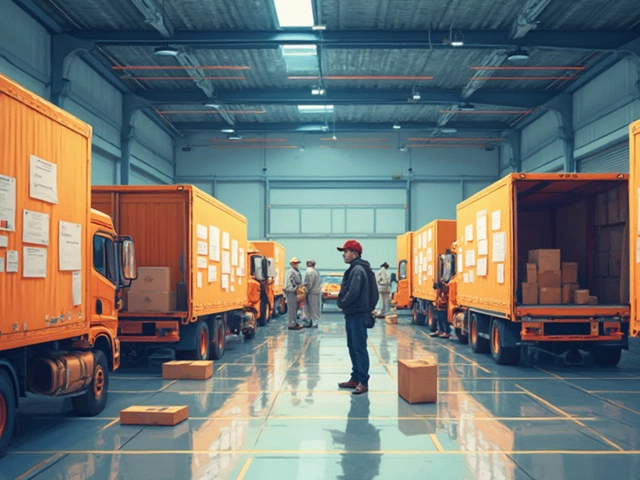Cost‑Effective Pallets: Cut Shipping Costs & Boost Efficiency
Ever notice how a single pallet can add up to big expenses? It’s not just the pallet itself – the weight, the size, and how you handle it all affect the final bill. Choosing the right pallet can shave off dollars from every shipment and make storage easier.
Why pallet choice matters for your bottom line
The material you pick (wood, plastic, or corrugated) determines how much you pay for the pallet and for the freight. Wood pallets are cheap but can be heavy and may need treatment for international moves. Plastic pallets cost more up front, yet they’re lighter, reusable, and often qualify for cheaper freight rates because they reduce weight. Corrugated pallets are ultra‑light and perfect for one‑off deliveries, but they can’t handle heavy loads.
Size matters, too. A standard 48" x 40" pallet fits most trucks, so you avoid extra space charges. Oversized pallets force carriers to rearrange loads, which drives up costs. Also, the pallet’s condition matters – damaged pallets can lead to damaged goods, which hurts your reputation and your wallet.
Tips for finding cheap yet reliable pallets
1. Buy in bulk. Most suppliers drop the price per pallet when you order a few hundred. If you have storage space, stack them and keep a ready supply.
2. Rent instead of buying. For seasonal spikes, renting pallets from a local provider can be cheaper than buying and storing them year‑round.
3. Go for reusable plastic. The higher upfront cost pays off after a few cycles. Count the trips you make – after five or six uses the total cost is lower than repeatedly buying wood pallets.
4. Check for damaged pallets. Always inspect before loading. A cracked pallet can cause a load shift, leading to extra handling fees or a rejected shipment.
5. Partner with a logistics company that offers pallet services. At Dex Removals & Logistics Services we provide cost‑effective pallet solutions tailored to your needs. We source bulk‑price pallets, handle any required treatment for international moves, and even pick up empty pallets for reuse.
6. Use pallet pooling. Some industry groups run pool programs where you return pallets to a central hub. This spreads the cost across many users and keeps pallets in good condition.
7. Match pallet type to cargo. Light, non‑fragile goods can go on corrugated pallets, while heavy machinery needs sturdy wood or reinforced plastic.
By following these steps you’ll see immediate savings on freight rates, lower handling fees, and fewer product returns caused by pallet damage. Remember, the cheapest pallet isn’t always the best – look at the total cost of ownership, including weight, durability, and reusability.
If you’re unsure which pallet fits your business, give Dex Removals & Logistics Services a call. Our team can audit your current pallet usage, suggest the most cost‑effective option, and arrange delivery or pick‑up on your schedule. Saves you time, money, and the hassle of dealing with multiple vendors.
November 21, 2024
Evelyn Wescott
0 Comments
Exploring cost-effective and environmentally-friendly alternatives to traditional wooden pallets for shipping purposes is crucial. These alternatives not only help in saving money but also cater to specific shipping needs and preferences. From recycled materials to innovative design solutions, different options are available for a variety of industries. This article provides insights into practical alternatives suited for diverse logistics needs.




